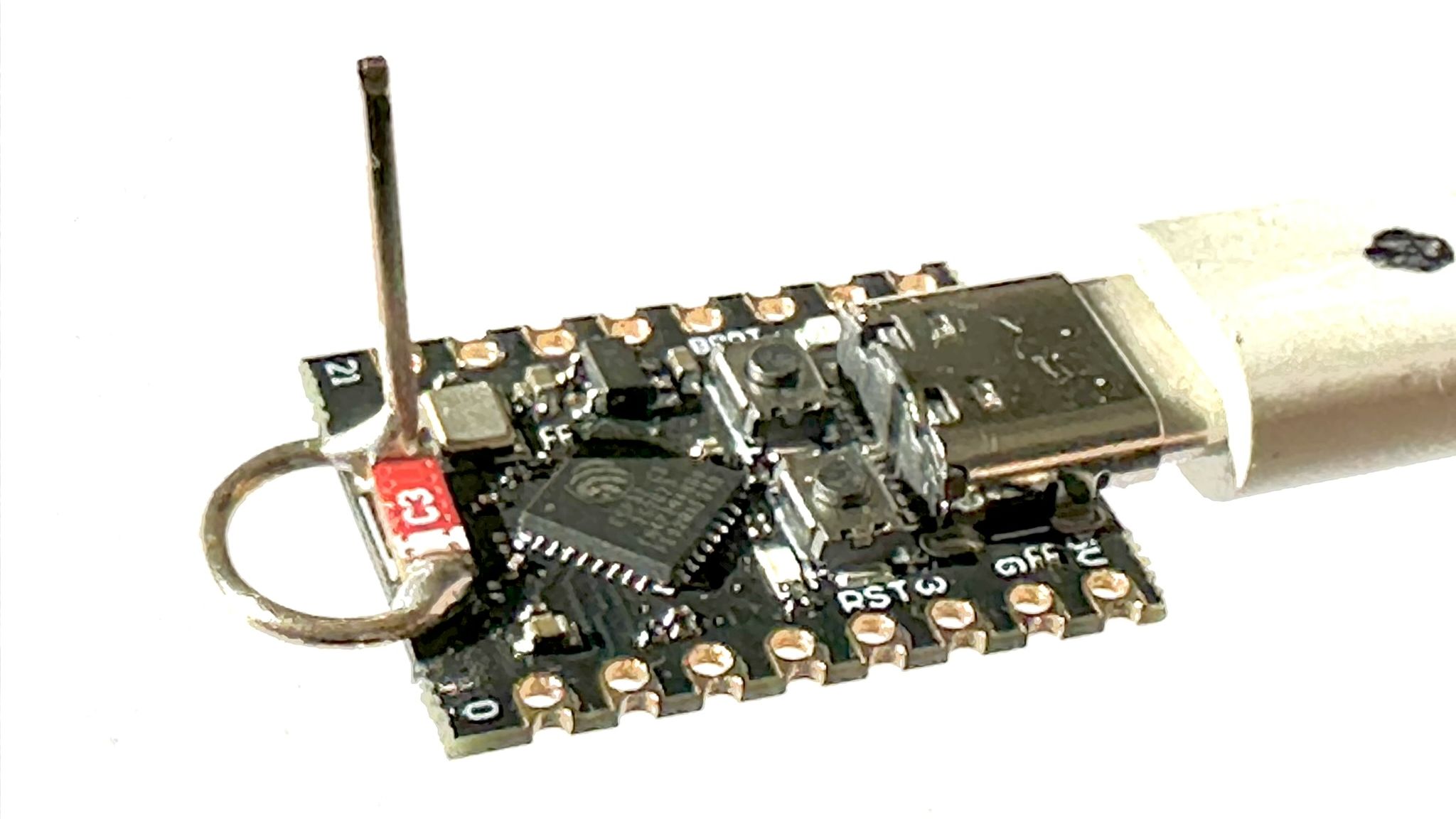Enhancing WiFi Performance of ESP32-C3 with a Simple Antenna Modification

Recently, there has been a surge of enthusiasm surrounding projects utilizing the ESP32-C3 microcontroller, and for good reason. This powerful microcontroller is making its mark in the electronics community, particularly due to its compact size and robust performance capabilities. The latest generation of development boards featuring the ESP32-C3 has simplified the process of integrating substantial computational power into even the most modest of projects. However, many users have reported challenges related to WiFi performance on some of these boards, an issue that has been astutely addressed by electronics hobbyist Peter Neufeld.
While the ESP32-C3 variant is available in a multitude of designs, some of which can be found for as little as a dollar through various online electronics retailers, the boards often come equipped with a CA-C03 ceramic chip antenna. This antenna, while compact, can suffer from subpar radio frequency (RF) performance, mainly due to the limited space that surrounds it. Recognizing this problem, Peter devised a straightforward yet effective enhancement: a new antenna crafted from a 31-mm length of silver wire.
The modification process is relatively simple. To create the antenna, one end of the wire is bent into a loop by wrapping it around a 5-mm drill bit, then bending it so that it stands perpendicular to the remaining wire segment. This loop is then adjusted so it can span the length of the original ceramic chip antenna, allowing it to be soldered directly across it. Remarkably, this quick fix can lead to a significant boost in WiFi performance, as indicated by Peter's custom RSSI (Received Signal Strength Indicator) logger, which shows improvements ranging from 6 to 10 dBm without the need to remove the original antenna.
In a related video, Circuit Helper further explores this antenna modification and tests several variations to gauge their effectiveness. The results are nothing short of impressive, with some setups yielding enhancements of up to 20 dBm. Despite these gains, Circuit Helper notes that the antenna's size could pose limitations for projects that prioritize a compact microcontroller unit (MCU). In an attempt to address this, he experimented with coiling the antenna, although this approach yielded mixed results. Through his trials, he determined that an optimal length of approximately 34 mm for the main antenna element provides the best performance.
The fascinating aspect of this modification lies in the potential for further innovation. There remains a significant opportunity for experimentation within the maker community. For instance, one could ponder the effects of mounting the antenna with the loop oriented perpendicularly to the board, allowing the main element to extend outward. We encourage our readers to share their own experiments and discoveries regarding this antenna modification, as your findings could greatly enrich our understanding of optimizing the ESP32-C3's capabilities.

























